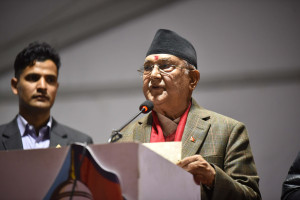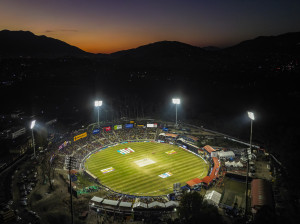Editorial
Toilets for all
Gender-inclusive toilets are a matter of right for queer folks. They will also boost pink tourism.
Lately, activists and LGBTIQ individuals worldwide have been calling for gender-inclusive toilets which break the binary of “male” and “female” and welcome everyone regardless of their gender identity. This issue has gained prominence in Nepal as well, as the country is promoting equality and safety for marginalised people, particularly gender non-conforming individuals. Be it through its first international LGBTIQ conference last month or the first same-sex couple marriage of Surendra Pandey and Maya Gurung last year, Nepal has put its inclusive agenda forward for the community’s folks. Gender-inclusive toilets will add value to the country’s gender-friendly efforts.
These toilets are more important than ever as their absence not only forces people to conform to societal norms of gender binary. It also marginalises and stigmatises transgender and non-binary individuals. This is a serious issue: Transgender students have to avoid either using the toilets labelled as male or female altogether or use them under harsh scrutiny. The problem is no different in developed countries, as according to a study on gender-neutral toilets conducted in western Australia, sexuality and gender-diverse students (SGD) find school toilets the “least safe spaces” in school premises. Similarly, another survey in the United States on the experiences of LGBTQ youths in schools shows that among the 23,001 SGD students, 43 percent avoided toilets due to safety concerns or discomfort. Unfortunately, Nepal is yet to conduct any such study or research.
Not that the country doesn’t have such toilets. In 2012, the Blue Diamond Society, an organisation working for sexual minorities in Nepal, inaugurated the country’s first gender-inclusive toilet at Bageshwari Park in Nepalgunj, Banke, which is still functioning. However, in other parts of the country, including in the capital, only a handful of toilets are gender- and disability-inclusive. Kathmandu’s Mayor Balendra Shah’s pledge to build 10 new public toilets that would serve the needs of queer community and people with disabilities has yet to translate into reality. The officials of Kathmandu Metropolitan City said in a recent Post report that they are renovating existing facilities to make them gender- and disability-inclusive. This is commendable, as it not only saves time and money but also aligns with the demands of the time. Nonetheless, these toilets must have facilities set by the World Health Organisation, including good designs, menstrual hygiene management, sanitation, running water, tactile pavements that lead to toilets for blind individuals, and so on.
As per the World Population Review, countries like the US, Thailand, China, India, Canada and Japan have provisions for such toilets. But the good news ends here: LGBTIQ folks there continue to face harassment, violence and abuse in public spaces like toilets. This means that inclusive toilets alone cannot lead to inclusivity unless society acknowledges the diverse identities of people. Many policymakers and stakeholders cannot imagine what people with disabilities and LGBTIQ individuals have to go through due to the lack of inclusive toilet facilities. There is hence a need to sensitise people about disability, sexuality and gender diversity through awareness campaigns and educational programmes. Time has also come to prepare a standard for building toilets in public places across the country through programmes and policies.
Building gender-inclusive toilets will boost the “pink tourism” the country is banking on. As more and more queer individuals enter the country, business persons, hotels and stakeholders should be serious about building gender-inclusive toilets. Such initiatives will make these tourists feel welcome while also creating inclusive spaces for LGBTIQ individuals back home.




 18.12°C Kathmandu
18.12°C Kathmandu














